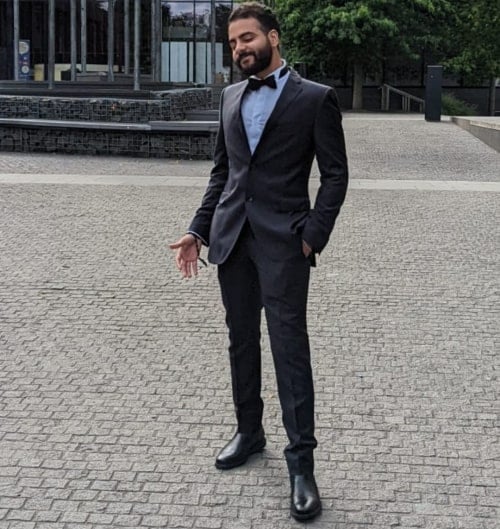GAME DESIGN
MONDAYS & THURSDAYS
6 PM GMT
LIVE ONLINE COURSE ON BECOMING A GAME DESIGNER
15 JAN 2026 - 12 MAR 2026
DURATION:
8 WEEKS
MONDAYS & THURSDAYS
6 PM GMT
Level up your game design skills and craft worlds players won’t want to leave.
Gavin Yeo, Design Director at EA (Battlefield, Need for Speed), will guide you from concept to portfolio-ready Game Design Document, teaching the craft, the tools, and the mindset of a pro.
WHO THIS COURSE IS FOR
-
YOU ARE AN ASPIRING GAME DESIGNER
Struggling to land your first role or pivot into games? This gives you a complete Game Design Document and Unity prototype to showcase your skills. You’ll gain confidence, industry know-how, and a clear path to junior game designer roles.
-
YOU ARE A CREATIVE BEGINNER OR STUDENT
Overwhelmed by where to start or unsure how to turn your ideas into playable games? Our game design course will guide you step-by-step, showing you how to structure your creativity into a professional GDD and prototype using accessible tools. By the end, you’ll speak the language of the industry.
-
YOU ARE A JUNIOR DESIGNER
Already working in game design but stuck on narrow tasks? Expand your expertise across systems, narrative, player psychology, and monetisation. Practice pitching, documenting, and prototyping in Unity to level up your portfolio and move toward mid-level opportunities.
Transform ideas into playable worlds.
Take your game from concept to playable reality in Unity. Prototype mechanics, test levels, and bring systems and narratives to life, learning hands-on how ideas become interactive experiences that players can’t resist.
Learn LIVE from a AAA game designer.
Interact in real time with Gavin Yeo and fellow aspiring designers in our online game design course. Get instant feedback on your ideas, join collaborative workshops, and experience the workflow of top studios; all from the comfort of your own setup.
Level up fast: craft your Game Vision, build your GDD, design mechanics, systems, and loops, and prototype in Unity. Workshops and optional side quests, like game analysis and balancing challenges, give you real XP for your portfolio.
Unlock pro skills: pitch ideas, iterate with peer feedback, and document like a studio-ready designer. Industry tips from Gavin show you how to stand out in applications and interviews, guiding you toward junior or mid-level roles.
Hit Endgame with a complete GDD and playable prototype. Show off mechanics, narrative, levels, economy, and monetisation in a portfolio-ready project that acts as your ultimate loot for recruiters, studios, or indie pitches.
Gavin Yeo
LinkedIn Profile- Leads design as Design Director at EA, working on Battlefield
- Designed AAA titles including Need for Speed: Unbound, Dirt 5, Skull & Bones
- Started career in software engineering at Unity Technologies
- Specialises in translating technical skills into engaging player experiences
- Experienced across mechanics, systems, level design, narrative, and economy
- Recognised internationally with awards and critical acclaim
- Passionate about mentoring the next generation of game designers

Kick things off by meeting your instructors, getting to know your classmates, and mapping out the journey ahead. You’ll get the lowdown on the course structure, the final project, and what’s expected.
- Instructor & associate instructor intro
- Course structure & final project
- Housekeeping rules
Get clear on what game design is, where game designers fit in the development pipeline, and how their role shifts between indie teams and AAA studios. By the end, you’ll know who does what, why it matters, and where a game designer makes the biggest impact.
- Game design: Genres & platforms
- Case Study: Game design pipeline: AAA vs. indie studios
- Team & organisational hierarchy
- Game designer’s role & responsibilities
Get hands-on with player personas, learn what makes games fun, and start shaping it all into a Game Design Document. Turn loose ideas into a structured concept that speaks the language of game devs.
- Types of fun
- Workshop: Creating personas
- GDD template overview: Format & structure
- Case Study: Overview of GDD of recognised games
Assignment #1: Game Vision
Think of a game project you want to create. Start developing your Game Design Document, including the Title, Designer, Vision Statement, Summary, Target Audience, and Target Platforms sections.
Explore how game mechanics, player dynamics, and aesthetics come together to shape player experience. Analyse hits like Counter-Strike and StarCraft to see how intentions turn into engaging gameplay.
- Mechanics
- Dynamics
- Aesthetics
- Case Study: MDA framework application (Counter Strike, Starcraft)
- Goals, intentions, execution
Assignment #2 (Optional): MDA Practice
Choose a game (Fortnite/Blue Prince/EA FC) and analyse it using the MDA framework.
Take your game idea from spark to pitch-ready concept. Brainstorm, refine, and craft a compelling elevator pitch, then get hands-on feedback to make sure your idea lands with impact. Confidently present a game concept that excites and engages.
- Ideas brainstorming
- Pitch creation
- Successful game pitch: Tips
- Workshop: Pitching your game concept
Explore how game systems tick and interact, from combat mechanics to scalable designs. Learn how well-crafted systems spark unexpected player experiences, and get hands-on building a mock system in Miro.
- Game system components
- Translating a game concept into a system
- Combat systems
- Scalable game systems
- Player experiences & system design
- Demo: Conceptualising game systems in Miro for a mock case
Assignment #3: MDA & Systems
Continue working on your Game Design Document and complete the following sections for your game: Mechanics & Dynamics, Aesthetics.
Learn how to keep players hooked by balancing skill and challenge. Explore flow theory, skill ceilings and floors, and dynamic difficulty, then apply it in hands-on workshops to see how games like Super Mario and Candy Crush keep the fun rolling.
- Flow theory & parameters
- Skill ceilings & skill floors
- Workshop: Balancing challenges (Super Mario, Candy Crush)
- Static & dynamic difficulty
- Player vs. environment (PVE) & Player vs. player (PVP)
- Developing puzzles
Dive into the fundamentals of level design and game tutorials. Practice crafting levels, balancing player learning curves, and integrating rewards and content, then collaborate to polish and present your own playable concepts.
- Level & spatial design principles
- Learning curve
- Onboarding & tutorials
- Developing level maps
- Workshop: Level design practice (pen/paper, Canva, Miro, Photoshop, Paint)
- Content design: Armour, weapons, rewards
Assignment #4: Level & Content Design
Continue working on your Game Design Document and complete the following sections for your game: Levels, Content.
Design game experiences that stick. Learn to create engaging loops and flows that tap into player psychology, keep players motivated, and use feedback loops to make every interaction count.
- Game loops
- Player flows
- Player psychology & genre
- Feedback loops: Positive & negative
Learn how to design a game economy that keeps players engaged for the right amount of time. You’ll explore tuning strategies, balance in-game values, and build practical models in Excel or Google Sheets to see your economy in action.
- Tuning & balancing strategies
- Game economy design
- Demo: Building basic models in Excel/Google Sheets
Assignment #5: Game Loop & Economy Design
Balance at least one of the provided game models in Google Sheets & continue working on your Game Design Document, including the following sections for your game: Game Loop, Economy Design.
Craft game narratives that players will feel. Explore story structures, character arcs, dialogue, and cinematic techniques that bring gameplay to life with real-world examples and expert insights.
- Framework: Three-act structure, hero’s journey, etc.
- Case Study: Types of narratives in games
- Story arcs
- Characters & dialogues
- Use of cinematics & cameras
Assignment #6: Narrative Design
Continue working on your Game Design Document and complete the Narrative section (Story, Characters, World).
Test, tweak, and level up your game. Prototype ideas, run playtests with real feedback, and learn how to collaborate with developers, artists, and designers to turn rough concepts into polished gameplay experiences.
- Paper & code prototyping
- Cross-team cooperation
- Playtests: Goals, audience, feedback
- Iteration cycle in the game design process
Dive into Unity and bring your first game ideas to life. Explore the engine’s tools, set up your first scene, and start building custom mechanics with hands-on guidance from an industry pro.
- Introduction to Unity
- Getting started with Unity
- Scene, controls, component-based architecture, custom mechanics
Get hands-on with colliders, jumping and shooting mechanics, level editing, and asset management, all while seeing how pros turn prototypes into playable experiences.
- Introduction to colliders
- Advanced mechanics: Jumping, shooting
- Pro builder: Level editor
- Asset store & management
Assignment #7 (Optional): Prototype & Playtest
Create a basic prototype in Unity for playtesting. Playtest your game with peers, friends, and family. Collect feedback, iterate, and submit a feedback report with a change list.
Turn data into decisions. Explore game analytics, uncover what keeps players engaged, and design features that boost retention, satisfaction, and in-game spending.
- Monetisation models
- Player engagement, retention, sentiment
- Key design-related metrics
- Designing features to drive specific metrics
Level up your career-ready kit. Learn how to craft a standout resume, build a portfolio that grabs attention, and position yourself to land game design roles. We’ll cover networking, interview hacks, and extra skills that give you the edge.
- Writing a resume
- Building a portfolio: Tools & practices
- Networking
- Landing job interviews
- Additional skills to gain a competitive advantage
Assignment #8: Final Project: Game Design Document (GDD)
Finalise all sections of your GDD and submit the complete final project. Plus, update your résumé and digital portfolio, or create them from scratch using the tips discussed in the lesson.
What our students say

MARKETING DIRECTOR
"It was such a great experience, well worth the course fee which I invested personally - I've learnt so much and feel much more confident in my role.."

"The course at ELVTR was a great investment in my career. The materials are top-notch, and the instructors provided excellent support."

"The knowledge. The teacher is very experienced. He is able to answer our questions in depth, and takes the time to do so."

"The course was very helpful in helping me expand my design toolkits by gaining a wealth of new knowledge and inside expertise to stay at the forefront in an age of rapidly developing technological and software advancements."
Fill in the form to start your ELVTR journey.
We will contact you to clarify all the details.
